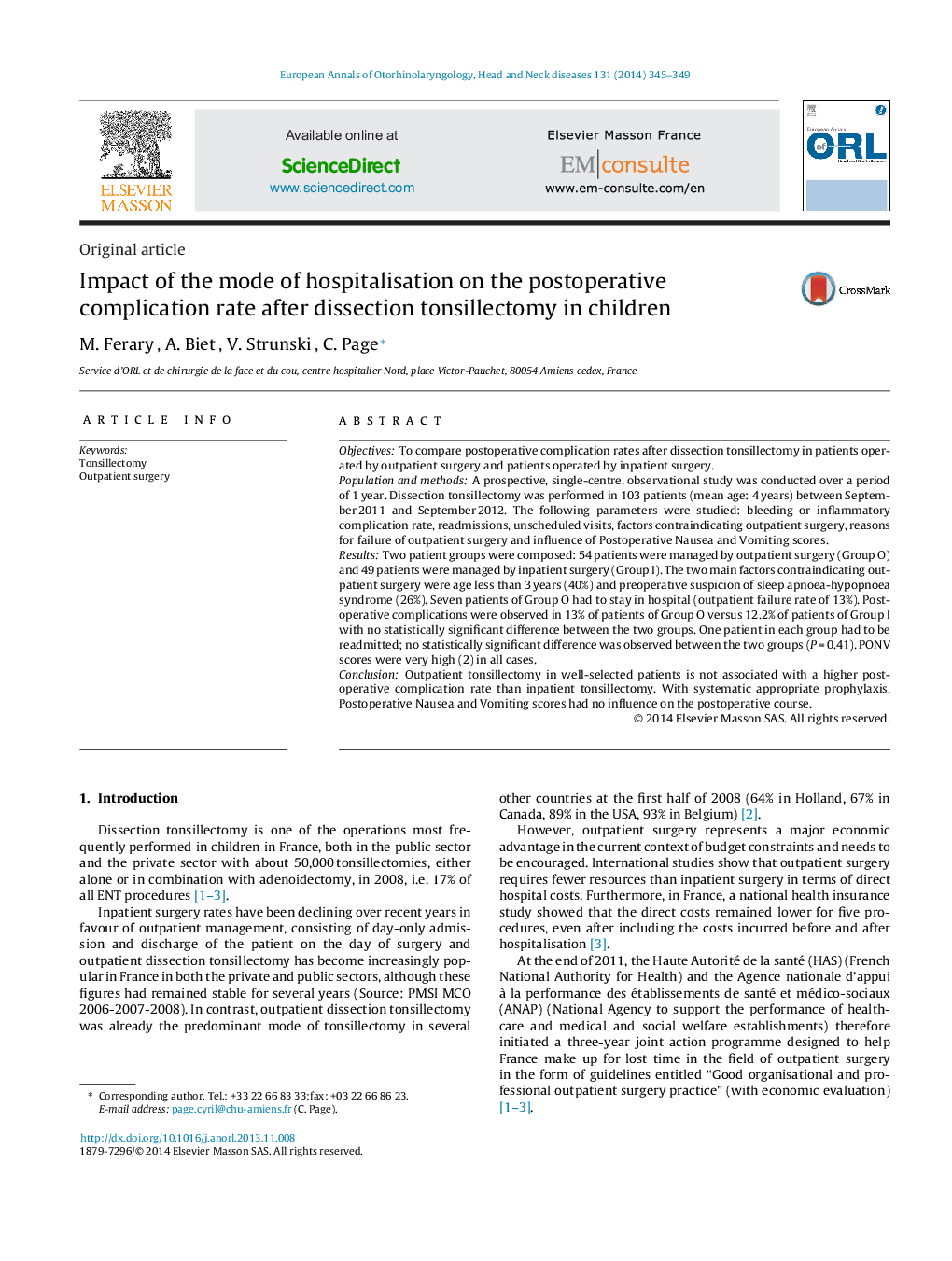| Article ID | Journal | Published Year | Pages | File Type |
|---|---|---|---|---|
| 4110132 | European Annals of Otorhinolaryngology, Head and Neck Diseases | 2014 | 5 Pages |
ObjectivesTo compare postoperative complication rates after dissection tonsillectomy in patients operated by outpatient surgery and patients operated by inpatient surgery.Population and methodsA prospective, single-centre, observational study was conducted over a period of 1 year. Dissection tonsillectomy was performed in 103 patients (mean age: 4 years) between September 2011 and September 2012. The following parameters were studied: bleeding or inflammatory complication rate, readmissions, unscheduled visits, factors contraindicating outpatient surgery, reasons for failure of outpatient surgery and influence of Postoperative Nausea and Vomiting scores.ResultsTwo patient groups were composed: 54 patients were managed by outpatient surgery (Group O) and 49 patients were managed by inpatient surgery (Group I). The two main factors contraindicating outpatient surgery were age less than 3 years (40%) and preoperative suspicion of sleep apnoea-hypopnoea syndrome (26%). Seven patients of Group O had to stay in hospital (outpatient failure rate of 13%). Postoperative complications were observed in 13% of patients of Group O versus 12.2% of patients of Group I with no statistically significant difference between the two groups. One patient in each group had to be readmitted; no statistically significant difference was observed between the two groups (P = 0.41). PONV scores were very high (2) in all cases.ConclusionOutpatient tonsillectomy in well-selected patients is not associated with a higher postoperative complication rate than inpatient tonsillectomy. With systematic appropriate prophylaxis, Postoperative Nausea and Vomiting scores had no influence on the postoperative course.
